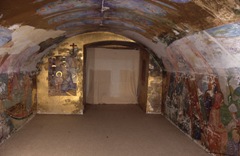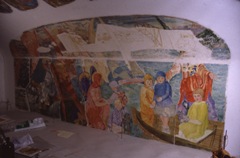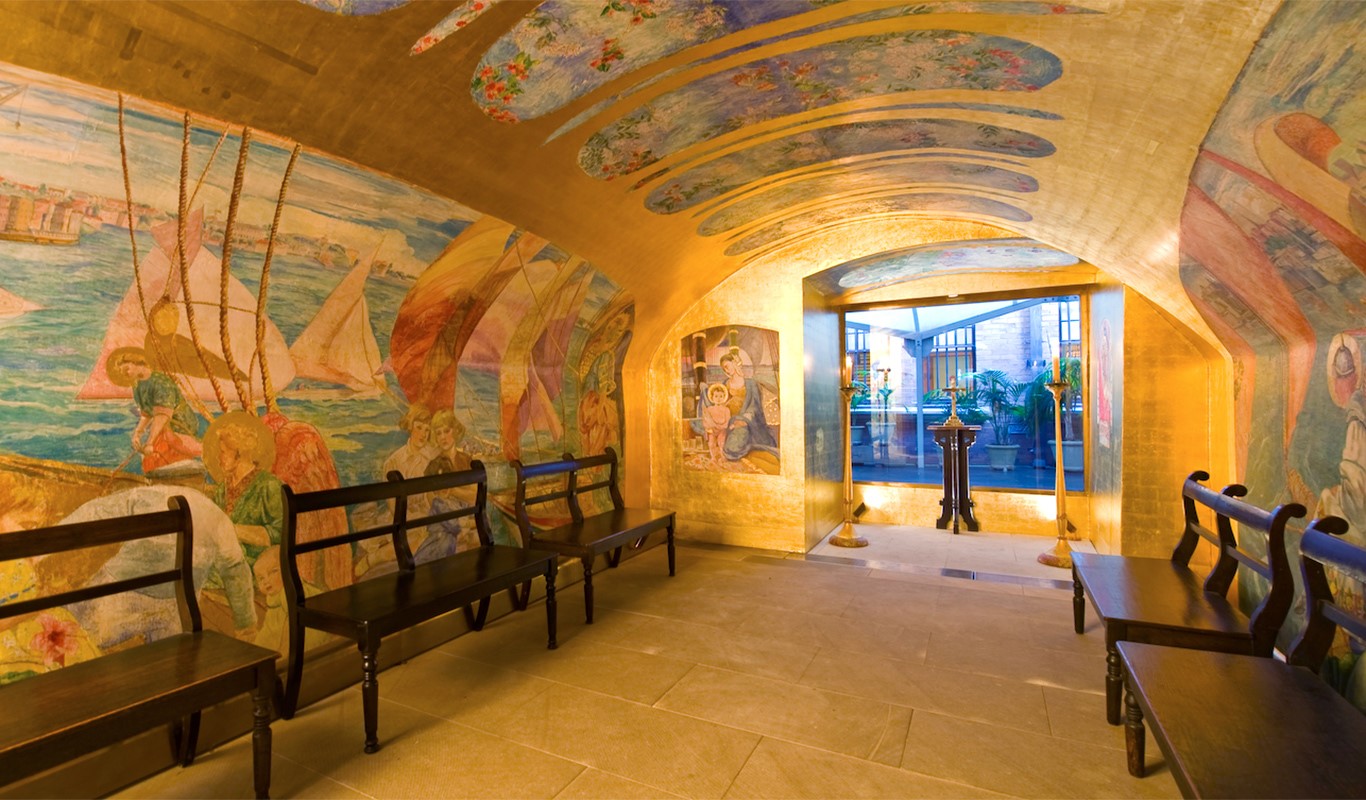Children's Chapel - St James Anglican Church
PROJECT DATE : 2000project
client
services
Overview
The Turramurra Wall Painters group was founded in the 1920s by Ethel Anderson (1883-1958) and included, amongst other important artists of the period, Roland Wakelin and Roy de Maistre.
In 1929 Anderson designed, and painted with members of the group, murals for the Children’s Chapel in the crypt of St. James Church, Sydney (1824). Including scenes such as the Angel of Mercy with cockatoo, Anderson wrote that the group's aim was to 'give the tiny room the brilliance of a page from the Book of Kells'.
Condition
Anderson carried out some remedial work on the murals in 1952 but requested that no further work be done during her lifetime. By the 1980s the murals had deteriorated so much that the chapel had to be closed. Large sections of the paint were being lost as a result of crystalline salts on the wall surface forcing off the painted plaster and gold leaf.
ICS was engaged to undertake an extensive conservation treatment, which involved removing the mural from the walls of the crypt and ceiling and reapplying it onto a fibreglass support in order to halt deterioration and loss. This required the paint surface to be faced up and then cut away from its plaster support and reapplied onto fibreglass panels built to match the form of the chapel.
Treatment
- Removal of mural from walls and ceiling
- Lining of mural with fibreglass support
- Inpainting losses
- Reapplication of fibreglass panels with mural to crypt walls and ceiling
project
client
services




